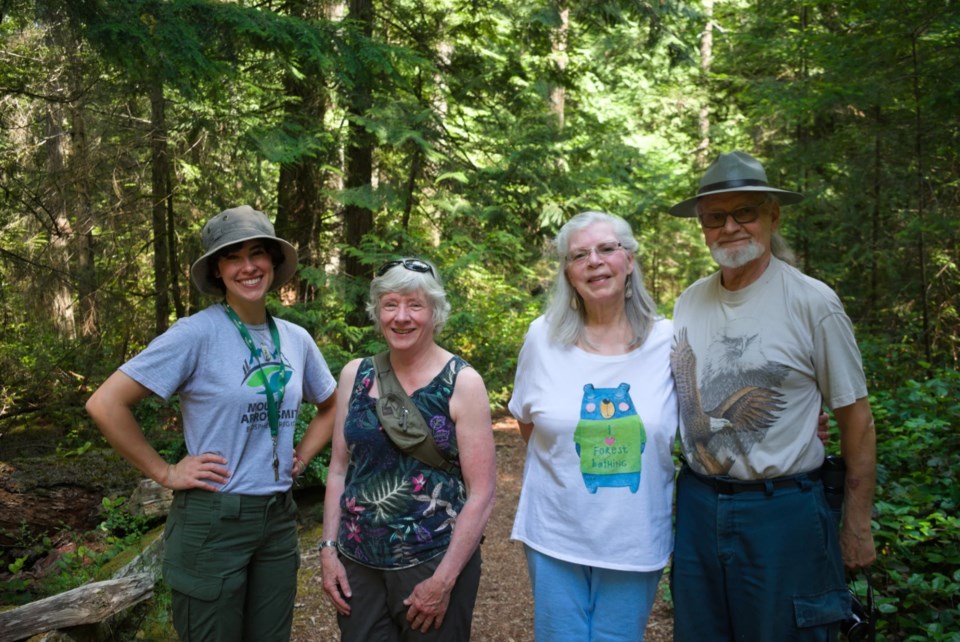Until about 10 years ago, when the large red chestnut tree outside Dorothee Kieser's living room window flowered, the tree would be covered in beautiful yellow swallowtail butterflies. But recently, Kieser has noticed how the tree has bloomed much earlier. Now, very few swallowtails are ready to come visit the tree; the cycles of the two are no longer in harmony.
Kieser, a retired Fisheries and Oceans Canada biologist and avid gardener, reflects on the disappearing butterflies as she describes how she came to be part of founding a group of citizen scientists observing and documenting how climate change is hitting Vancouver Island’s forests and plant species. The data collection project is now spread out across seven sites, with six active on Vancouver Island.
Led by Heather Klassen at the B.C. Ministry of Forests and Jessica Pyett of Mount Arrowsmith Biosphere Region Research Institute (MABRRI), part of VIU, the effort is now in its eighth year. Once they reach a decade, the team will have meaningful long-term data to inform government agencies.
“[We] always hear anecdotal remarks from people saying ‘Oh, my berries haven’t come out this year,’ or, ‘the birds are later to come,’” Pyett says.
“What we're trying to do is really put concrete data behind those observations.”
Under the forested canopy of Qualicum Beach’s picturesque Milner Gardens and Woodlands, one such citizen scientist, Gary Murdock, is in his element. He’s been part of the program for five years, and he knows the data collection route and each of the plant specimens like the back of his hand.
Approaching vanilla leaf, oregon grape, huckleberry, Douglas fir and other native plants marked off with neon flagging tape along the route, Gary knows exactly what to look for on each specimen, pointing out new needles, sprouts, cones and growth. He reports his notes to MABRRI summer student Drew Dostaler, who jots down the findings in a device that logs the information into the public database using a program called Nature’s Notebook.
Gary’s wife, Ronda Murdock, is right alongside him, displaying equal knowledge on the route as the group, joined by recent initiate Judy Gibson, presses forward around the roots and felled logs littering the path.
At the towering rough-barked Douglas fir, Gary pulls out his camera and points it skyward to the tree top, zooming in to get an estimation of cone clusters that have come in since the group last collected plant information in May. As he peers through his lens, Ronda chuckles as she remembers helping her husband collect pine cones in the early years of their marriage, at the start of what would be a 35-year-long career for Gary with the B.C. forest service.
The two ran ecotours on the island for 20 years following his retirement. Over the years, they have gotten a sense of what impact climate change and drought is having on their natural surroundings. Gary notes cedar dying off because of a lack of water, and volatility in seed production.
For founder Kieser, she hopes that people will start paying more attention to what climate change is doing to the environment around them.
“I'm hoping that other gardeners — and not just gardeners but people in general — will just have a little bit of a closer look at what's happening in their surroundings, and hopefully take in some of the consequences,” Kieser said.
“I think the public awareness is slowly but definitely increasing. That's wonderful to see.”



